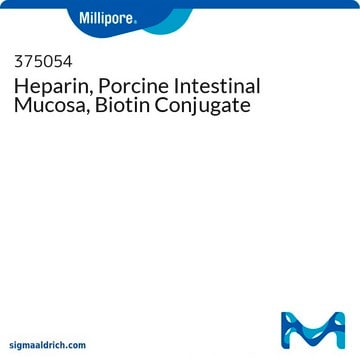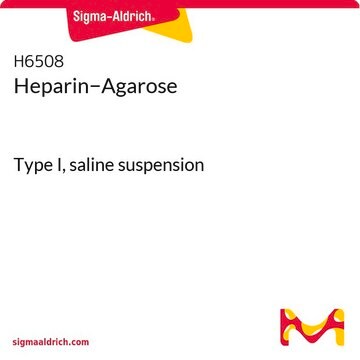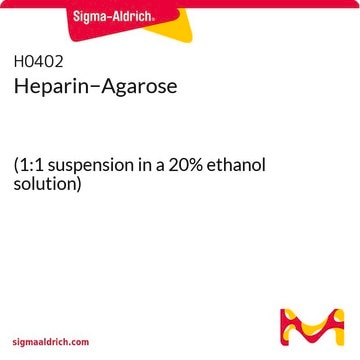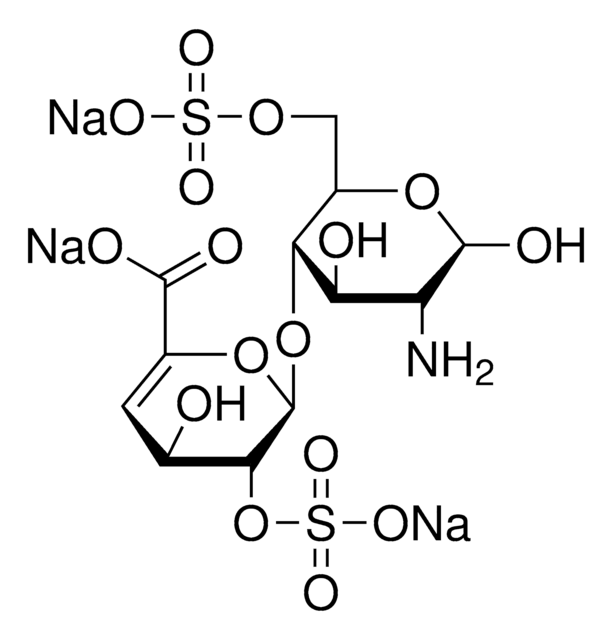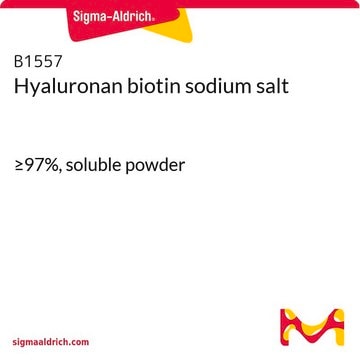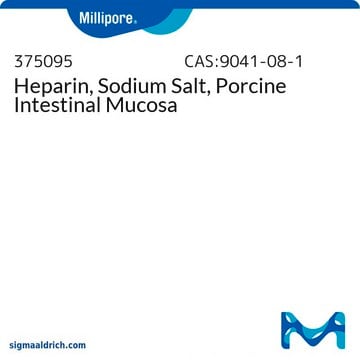The quality specification for product B9806 is that the molecular weight is approximately 15000 Daltons. This is only an approximation and no specific screening has been performed for other chain lengths. The source of the heparin is from porcine intestinal mucosa. The biotinylation method is considered proprietary.
The following reference provides information on the biotinylation of heparin:
Stearns, N., et al., Synthesis and Characterization of Highly Sensitive Heparin Probes for Detection of Heparin-Binding Proteins. Analytical Biochemistry, 247, 348 (1997).

